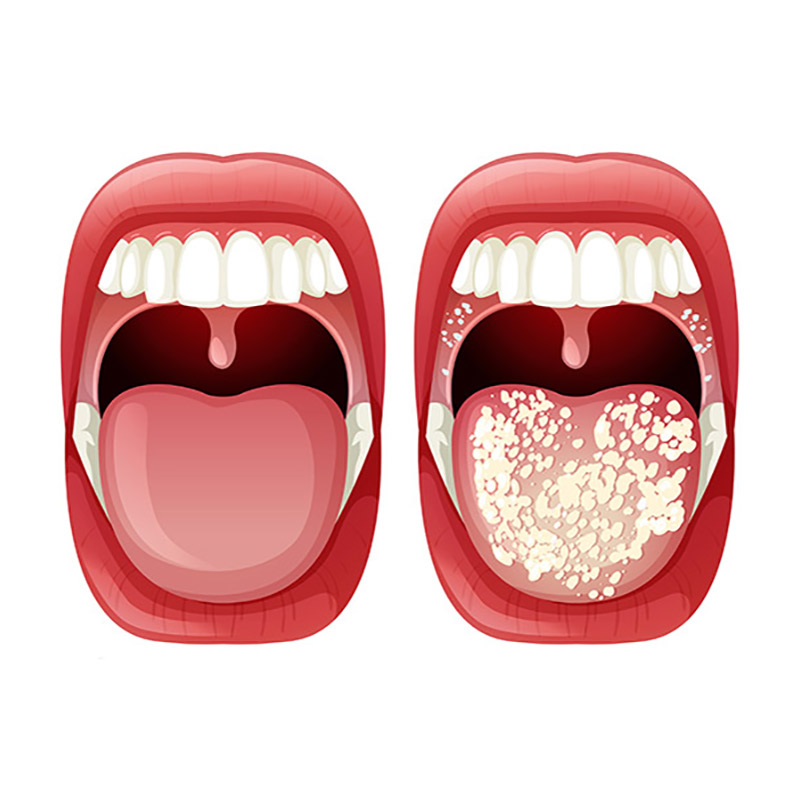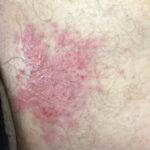Candidiasis occurs when the natural balance of microorganisms in the body is disrupted, allowing Candida fungi to grow excessively. While Candida is a normal component of the human microbiota, factors such as weakened immunity, antibiotics, or hormonal changes can contribute to its overgrowth, leading to infection.

Types of Candidiasis
- Oral Candidiasis (Thrush): Affects the mouth and throat, causing white patches and discomfort.
- Genital Candidiasis: Commonly known as a vaginal yeast infection, but it can also affect men, leading to balanitis.
- Cutaneous Candidiasis: Affects the skin, especially in moist areas such as armpits or under the breasts.
- Invasive Candidiasis: A severe form of infection that enters the bloodstream and can spread to internal organs, often affecting immunocompromised individuals.
Symptoms
Oral Candidiasis
- White patches on the tongue, inner cheeks, or throat
- Redness or soreness in the mouth
- Difficulty swallowing
- Cracking at the corners of the mouth (angular cheilitis)
Genital Candidiasis
- Itching or irritation in the genital area
- Thick, white discharge with a cottage cheese-like texture
- Redness and swelling of the vulva in women
- Discomfort or pain during urination or sexual intercourse
Cutaneous Candidiasis
- Red, itchy rashes in moist areas
- Cracked or peeling skin
- Fungal infections in nail beds
Invasive Candidiasis
- Fever and chills that do not improve with antibiotics
- Fatigue and general weakness
- Symptoms depend on the organs affected, such as difficulty breathing or urinary issues
Causes and Risk Factors
Several factors can contribute to Candida overgrowth:
- Antibiotics: Broad-spectrum antibiotics can disrupt the natural bacterial balance.
- Weakened Immune System: Conditions such as HIV/AIDS or treatments like chemotherapy can impair immunity.
- Diabetes: High blood sugar levels can promote fungal growth.
- Hormonal Changes: Pregnancy, birth control pills, or hormone replacement therapy can influence susceptibility.
- Poor Hygiene: Excess moisture and unclean conditions can encourage fungal growth.
Diagnosis
Diagnosis typically involves:
- Physical Examination: Observing symptoms such as rashes or white patches.
- Microscopic Examination: Scraping or swabbing affected areas to analyze under a microscope.
- Cultures: Identifying specific Candida strains in a laboratory.
- Blood Tests: For invasive candidiasis, detecting fungal elements in the bloodstream.
Treatment Options
Antifungal Medications
- Topical Treatments: Creams, ointments, or suppositories for skin and genital infections.
- Oral Medications: Fluconazole and itraconazole are commonly prescribed for systemic infections.
- Intravenous Antifungals: For invasive candidiasis, drugs like amphotericin B may be used.
Home Remedies and Lifestyle Changes
- Probiotics: Consuming yogurt or supplements containing Lactobacillus may restore microbiota balance.
- Hygiene Practices: Keeping affected areas clean and dry.
- Dietary Adjustments: Reducing sugar and refined carbohydrates can help limit fungal growth.
Prevention Strategies
- Maintain Proper Hygiene: Regularly clean and thoroughly dry skin folds and genital areas.
- Use Antibiotics Cautiously: Avoid unnecessary antibiotics and complete prescribed courses.
- Manage Underlying Conditions: Keep diabetes under control and strengthen immunity.
- Wear Breathable Clothing: Opt for loose-fitting, cotton-based fabrics to reduce moisture buildup.
- Healthy Diet: Include foods rich in probiotics and avoid excessive sugar.
Potential Complications
Untreated candidiasis may lead to:
- Chronic infections and discomfort
- Secondary bacterial infections
- Systemic infections in severe cases, particularly in immunocompromised individuals

